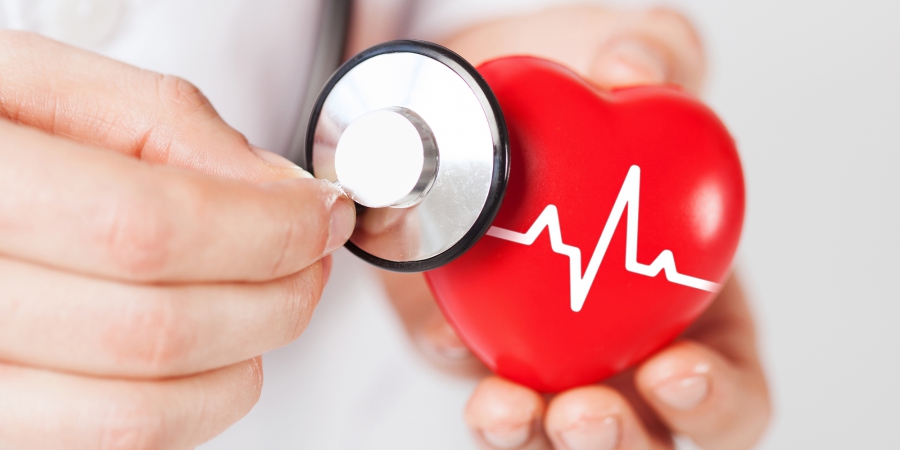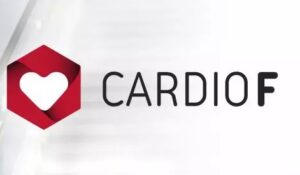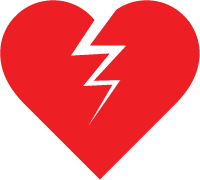Atrial fibrillation (AF) – medical point of view
- Home
- »
- Arrhythmia
- »
- Atrial fibrillation (AF) – medical point of view

Chaotic, rapid heartbeats
AF is an arrhythmia characterized by chaotic cardiac beats that are irregularly irregular. The heartbeat frequency can even be beyond 150 beats per minute.
Well-organized electrical system
The heart is made up of muscle cells distributed in 4 chambers: 2 atriaThe atria are the two upper chambers of the heart. They act as reservoirs for blood that will fill the ventricles. and 2 ventricles.
During a heartbeat, all the muscle cells in the atriaThe atria are the two upper chambers of the heart. They act as reservoirs for blood that will fill the ventricles. must first contract simultaneously so that both atriaThe atria are the two upper chambers of the heart. They act as reservoirs for blood that will fill the ventricles. contract together. Next, it is the turn of all the muscle cells in the ventricles to contract simultaneously so that the ventricles contract.
The coordination of the contraction of the atriaThe atria are the two upper chambers of the heart. They act as reservoirs for blood that will fill the ventricles. with that of the ventricles requires a good conductor for the atriaThe atria are the two upper chambers of the heart. They act as reservoirs for blood that will fill the ventricles. and an electrical system that conducts this contraction from the atriaThe atria are the two upper chambers of the heart. They act as reservoirs for blood that will fill the ventricles. to the ventricles.
It is an arrhythmia located in the atria
Atrial fibrillation is located in the atriaThe atria are the two upper chambers of the heart. They act as reservoirs for blood that will fill the ventricles.. It prevents them from contracting effectively.
The atria behave like musicians playing different songs simultaneously, without their bandmaster. It’s an electrical cacophony.
When one looks at the atria while in atrial fibrillation, it is much like seeing “jello” being shaken. There is a lot of erratic movement, but no effective contraction.

The gatekeeper is under fire
The ventricles do not contract at regular intervals either.
As there is no more “maestro” to manage the electric activity of the atriaThe atria are the two upper chambers of the heart. They act as reservoirs for blood that will fill the ventricles., the atrioventricular node (the gatekeeper of the electric impulse towards the ventricles) gets bombarded by the chaotic electric impulses from the atriaThe atria are the two upper chambers of the heart. They act as reservoirs for blood that will fill the ventricles.. The transmission of the electric signal towards the ventricles will also be irregularly irregular.
The pulseThe pulse is the sensation of beating that one feels by applying slight pressure on an artery, usually at the wrist or neck. It corresponds to the blood flow pulsated by the heart through the arteries with does not have tempo anymore.

Risk of clot formation into the heart
The main risk of AF is systemic embolism.
As the atria do not contract in an effective way, a blood clot may form on the walls of the atria because bloodBlood is composed of red blood cells, white blood cells, platelets, and plasma. Red blood cells are responsible for transporting oxygen and carbon dioxide. White blood cells make up our immune defense system. Platelets contribute to blood does not circulate; it stagnates. Portions of this clot may detach and reach the general circulation, which can lead to arterial embolisms.
If a clot reaches the brain, it is then a CVA (stroke).
In spite of that, AF is considered a benign arrhythmia.
ONE CAN LIVE VERY WELL WITH AF. THERE CAN BE NO SYMPTOMS OR PERCEPTION OF PALPITATIONS“Palpitation” is a symptom related to an abnormality in heartbeats. There are several types of arrhythmias. This term is like a surname that encompasses several first names.
Some patients can be completely asymptomatic, as no palpitations are perceived. For others, palpitations“Palpitation” is a symptom related to an abnormality in heartbeats. There are several types of arrhythmias. This term is like a surname that encompasses several first names. can be fast, uncomfortable and a source of anxiety.
In certain situations, the frequency may be normal or even slow, because of medication or of a disease of the electrical system of the heart.
6% of the general population is affected and often without identifiable causes
The causes of AF are multiple, but often there is no identifiable cause. The incidence of AF, i.e. the frequency of this condition in the general population is 6%.
Some risk factors
On the other hand, it is well known that older patients, patients with high blood pressure or diabetes develop AF more often.
Certain diseases or problems can contribute to the occurrence of AF, such as vascular diseases, problems of the cardiac muscle or the coronary arteriesThe two coronary arteries, the right and the left, form the blood network that supplies the heart with oxygen and nutrients. They are located directly on the surface of the heart and branch into smaller vessels that, inflammation of the pericardium after cardiac or chest surgery, pulmonary problems (COPD, pulmonary embolism) and even certain thyroid problems (hyperthyroidism).
Two approaches to treatment
How is AF treated? It can be done in two ways, so to speak, by either;
- controlling the heart rate (slowing it down) or
- by controlling the heart rhythm (stopping the arrhythmia) and bringing it back to its normal so-called sinus rhythm.
Several medical studies compared those two ways, but it appears that the two methods are equivalent and that there is no significant advantage of one over the other.
1-Controlling the heart rate
If there is no symptom of arrhythmia, it is simpler to control the heart rate. The cardiologist would normally choose this option initially.
But the heart rate can become too slow.
It is possible, however, that while trying to slow down the frequency, the latter becomes too slow. The cardiologist will then discuss with you about the need of inserting a permanent pacemaker to ensure an adequate heart rate if the medication slows down the heart rate too much.
The pacemaker provides an electrical backup to make sure that the heart rate does not go below a predetermined threshold.

2-Stopping the arrhythmia: medications or specialized invasive procedures
If controlling the heart rate by medication fails, if there are significant side effects, or if AF is interfering with the patient’s lifestyle, the doctor may consider another option.
This option is to regularize the heart rate by an electric shock. It is called electrical cardioversion.
Electrical cardioversion or electric shock
The electrical cardioversion is a method to restore a regular heart rhythm by the administration of an electrical shock through the chest.

This procedure, like any other procedure, involves some risks. When the doctor chooses this option, the risks and benefits are explained to the patient.
Ablation
When the usual oral treatment with side effects fail, a more invasive procedure called ablation can be considered.
This procedure allows the identification of the AF’s points of origin at the pulmonary veins level, and those are then burned using electrical waves (radiofrequency) or a cryotherapy device (that creates frostbites). The procedure will be explained in detail later on.
Chronic or paroxysmal atrial fibrillation
Atrial fibrillation can be present in a chronic way (permanent) or periodical (paroxysmal atrial fibrillation).
To prevent clot formation and embolism
The physician will decide if the use of an anticoagulant medication is indicated, based on certain factors such as age, the presence of diabetes or high blood pressure, a history of stroke or heart failure.
ANTICOAGULANTS ARE NOT MEANT TO THIN THE BLOODBlood is composed of red blood cells, white blood cells, platelets, and plasma. Red blood cells are responsible for transporting oxygen and carbon dioxide. White blood cells make up our immune defense system. Platelets contribute to blood, BUT TO PREVENT BLOODBlood is composed of red blood cells, white blood cells, platelets, and plasma. Red blood cells are responsible for transporting oxygen and carbon dioxide. White blood cells make up our immune defense system. Platelets contribute to blood CLOTS FROM FORMING.
Once this type of medication is initiated, it will most likely be required indefinitely.
The physician must weigh the risks of embolization versus the risks of bleeding, whenever he/she decides to prescribe an oral anticoagulant medication.
You should never stop this therapy on your own.


























